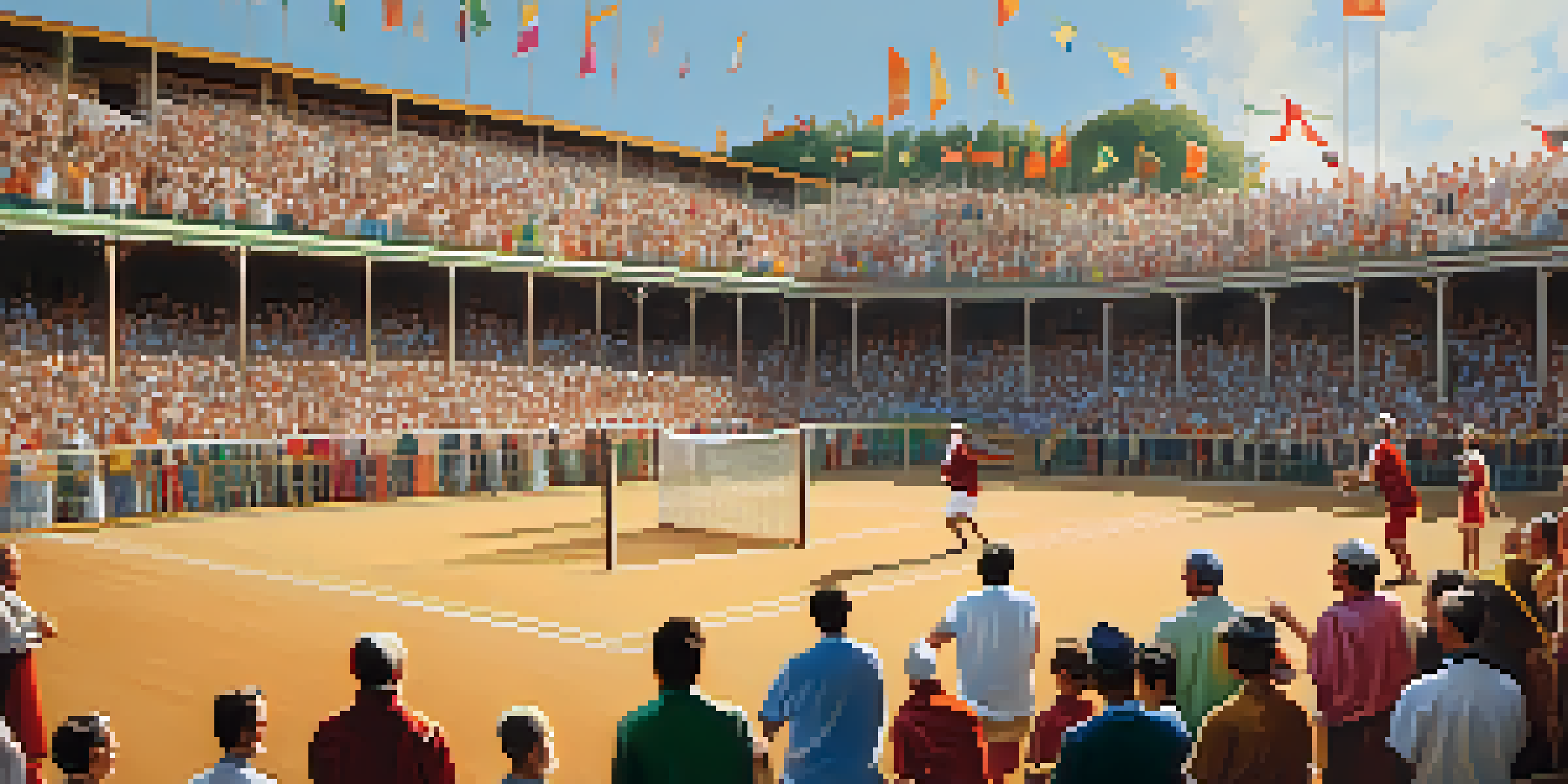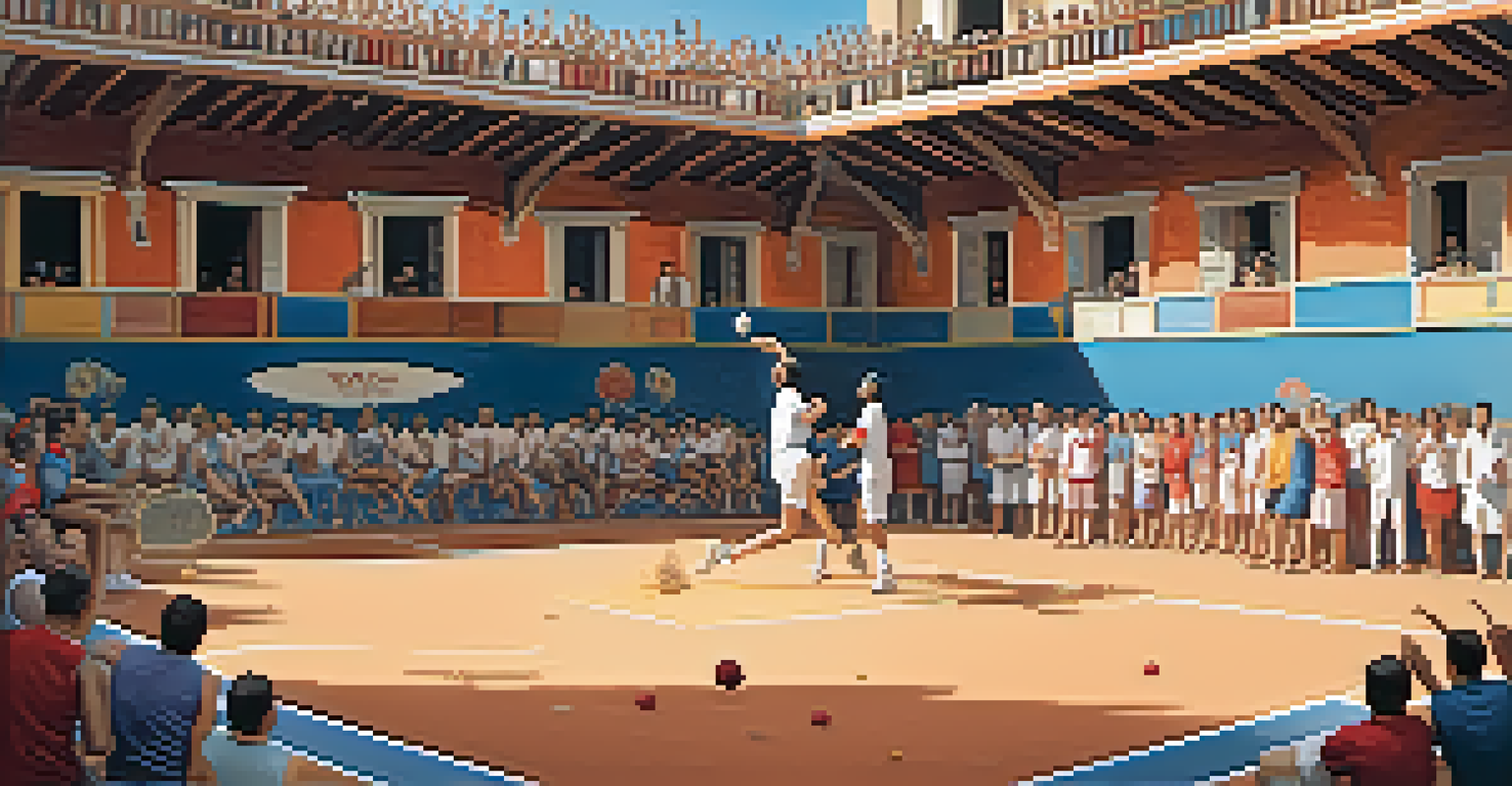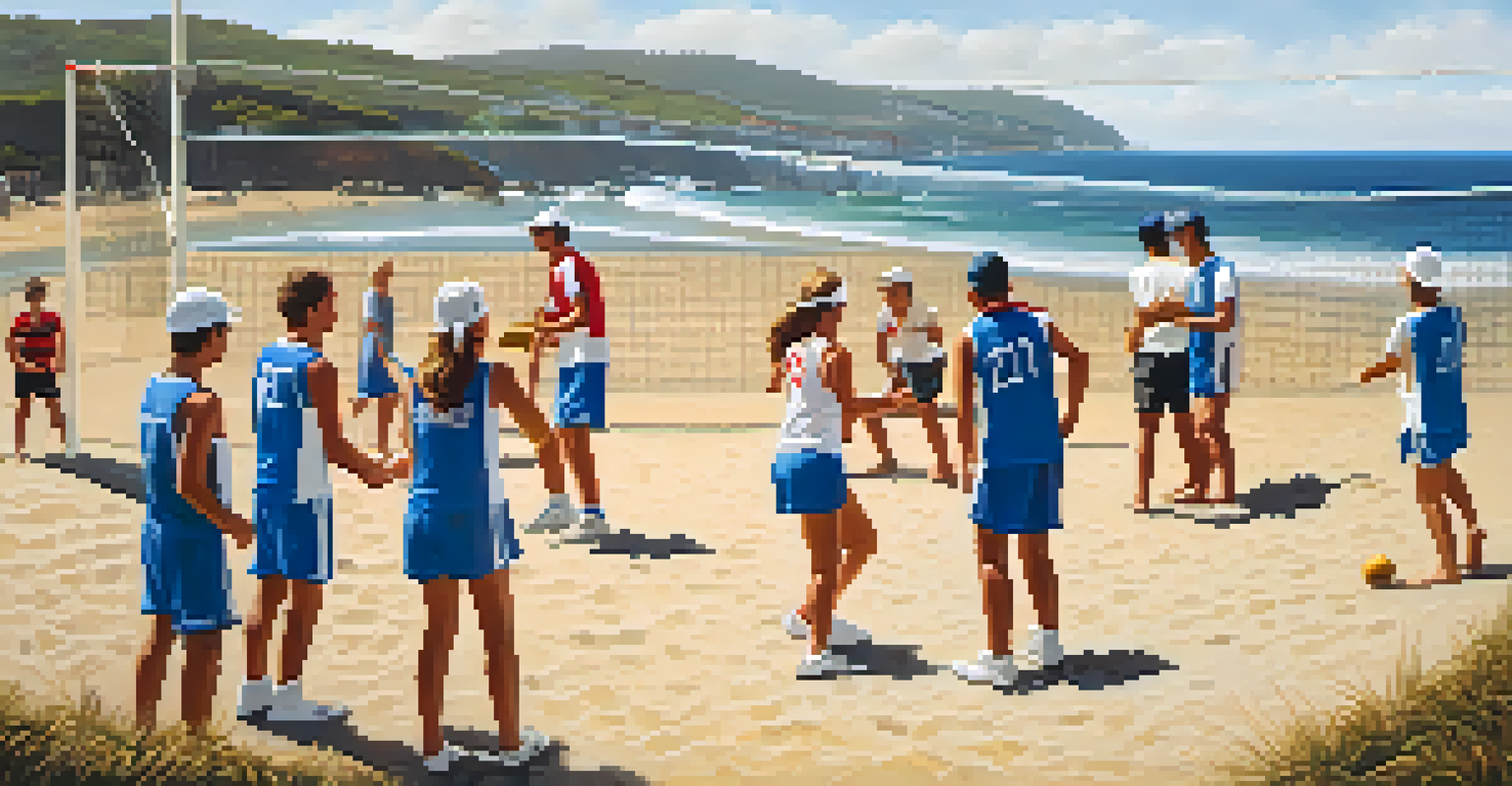Regional Variations of Pelota Across Spain Explained

Understanding Pelota: A Unique Spanish Sport
Pelota, a traditional sport in Spain, is more than just a game; it’s a cultural phenomenon. Originating in the Basque Country, it has evolved into various forms, each reflecting the distinct characteristics of its region. The sport involves hitting a ball against a wall, using a racket or the hand, and is often played in fronton courts.
Sports do not build character. They reveal it.
While the fundamentals remain consistent, the regional variations of pelota showcase different playing styles and rules. For instance, in some regions, players use a wooden bat called a 'paleta', while in others, they rely solely on their hands. This diversity makes pelota an exciting sport to explore, especially when considering local customs and traditions.
As we delve deeper into the various forms of pelota across Spain, we’ll discover how geography and culture have shaped each variant. This journey will highlight the creativity and passion that communities have for this timeless sport, making it a unique aspect of Spanish heritage.
Basque Pelota: The Traditional Heart of the Game
Basque pelota, also known as 'pelota vasca', is considered the most traditional form of the sport. It's played in frontons, specially designed courts that can range from outdoor arenas to indoor facilities. The passionate nature of Basque culture is reflected in how fiercely players compete, often making for thrilling matches.

This variant features several disciplines, including 'remonte' and 'jai alai', each with its own set of rules and equipment. Remonte players use a cesta, a curved basket, to catch and throw the ball, while jai alai is known for its speed and agility. Both forms require a high level of skill and athleticism, captivating audiences with their intensity.
Pelota: A Cultural Heritage
Pelota is a traditional Spanish sport that showcases regional diversity, reflecting local customs and cultural significance.
Watching a Basque pelota match is an experience in itself, as the crowd's energy adds to the atmosphere. The sport is not just about competition; it’s a celebration of culture, with traditional music and food often accompanying the games, creating a vibrant community spirit.
Valencian Pelota: A Blend of Tradition and Modernity
In the Valencian region, pelota takes on a unique twist with its own style known as 'pilota valenciana'. This variant is played in a court called 'trinquet', which has a roof and walls, adding an interesting dimension to the game. The triquet allows for longer rallies and a different dynamic compared to open frontons.
The essence of sport is that it is a type of play that involves competition.
Pilota valenciana is characterized by the use of the bare hand, unlike many other versions of the sport. Players rely on quick reflexes and precise ball control, making it a thrilling spectacle. The game is steeped in history, with roots tracing back to the 15th century, showcasing its importance in Valencian culture.
This form of pelota also features various types, including 'galotxa' and 'escala i corda', each with its own set of rules. The local pride in pilota valenciana is evident during festivals, where competitions and exhibitions draw large crowds, celebrating the rich heritage of the sport.
Catalan Pelota: A Sport for All Generations
Catalonia has its own version of pelota known as 'pelota catalana', which emphasizes community involvement and participation. It is played in various formats, making it accessible to players of all ages and skill levels. This inclusivity has helped the sport thrive in the region, fostering a love for the game among families.
One of the key characteristics of pelota catalana is the use of the forehand and backhand, which allows for a more dynamic playing style. Matches can take place in both outdoor and indoor settings, adapting to the environment and audience. This flexibility contributes to its popularity across Catalonia.
Regional Variations of Pelota
Different regions in Spain, such as Basque, Valencian, and Catalan, each have unique styles and rules that highlight their distinct cultural identities.
The sport is often accompanied by local festivities, where traditional music and food create a lively atmosphere. These events not only showcase the skills of players but also strengthen community bonds, making pelota catalana a cherished part of Catalan identity.
Andalusian Pelota: Embracing Regional Diversity
In Andalusia, pelota is a celebration of regional diversity, with variations like 'pelota a mano' gaining popularity. This form emphasizes skill and strategy, often played in a more informal setting. The relaxed atmosphere allows for a focus on fun and participation, making it a favorite among locals.
Andalusian pelota matches often feature a mix of traditional and modern elements, reflecting the region's vibrant culture. Players engage in friendly competitions while enjoying the camaraderie that comes with the sport. The community aspect is vital, as local gatherings often revolve around matches, creating a festive environment.
The influence of Andalusian culture is evident in the way pelota is played here, with music and dance sometimes incorporated into the events. This fusion of traditions adds a unique flavor to the sport, making it a rich experience that resonates with both players and spectators alike.
Galician Pelota: A Coastal Twist on the Game
In Galicia, pelota takes on a coastal flair with its variant known as 'pelota galega'. This form is played in a unique setting, often near the sea, which adds an interesting layer to the game. The regional landscape influences the playing style, resulting in a distinctive approach that sets it apart from other variations.
Pelota galega emphasizes teamwork, as players often engage in doubles matches, fostering a sense of community and collaboration. The sport is not only a competition but a social event, bringing together friends and families to enjoy the game. This aspect is essential in Galicia, where community ties are strong.
Future of Pelota: Tradition Meets Change
Efforts to preserve pelota's traditions while embracing modern influences are key to its continued relevance and popularity among future generations.
The coastal environment also impacts the style of play, with factors such as wind and terrain coming into play. This adaptation showcases the creativity of Galician players, who embrace the challenges of their surroundings. Pelota galega is a testament to how regional conditions can shape and enrich the experience of traditional sports.
The Future of Pelota: Preserving Tradition Amid Change
As pelota continues to evolve across Spain, there is a growing focus on preserving its rich traditions while embracing modernity. Various regions are investing in youth programs to ensure that the sport remains vibrant and accessible to future generations. This initiative aims to instill a love for the game among young players, fostering a sense of cultural pride.
Moreover, the rise of social media and digital platforms has provided new opportunities for promoting pelota. Highlights of matches, tutorials, and community events can now reach a wider audience, generating interest and participation. This modern approach helps to maintain the relevance of pelota in today's fast-paced world.

Ultimately, the future of pelota lies in balancing its historical roots with contemporary influences. As communities continue to celebrate their unique variations, the spirit of the sport will thrive, ensuring that pelota remains an integral part of Spain's cultural identity for years to come.